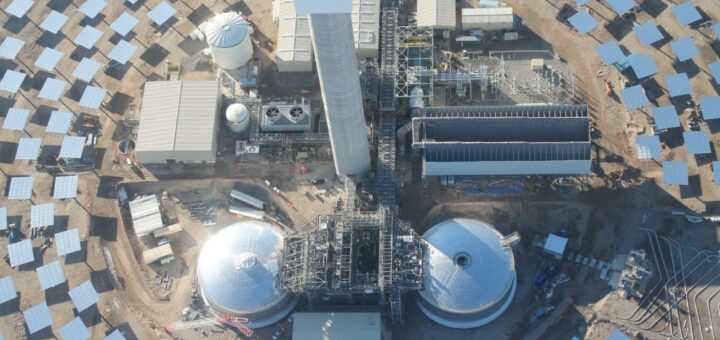Different Concentrated Solar Power (CSP) projects has pros and cons for cooperation, so the policy goals in the importing and exporting countries, which partially depend on the context conditions in these countries, should be considered. This post discusses and derives policy implications from CSP projects and how this effects cooperation.
When identifying the pros and cons of different concentrated solar power (CSP) project types for cooperation, the policy goals in the importing and exporting countries, which partially depend on the context conditions in these countries, should be considered. In addition to policy goals, there are some barriers to the use of the cooperation mechanisms (as defined in the renewable energy directives 2009/28/EC and 2018/2001/EU) to which different features of the project types may contribute more or less, i.e., which can be mitigated. Therefore, those CSP project types which meet those goals, activate drivers or remove barriers to cooperation are more likely to be suitable for cooperation.
Projects which are particularly suitable for cooperation are those which provide dispatchable electricity, i.e., are equipped with considerable storage capacities. This is the case for importing and (in case of physical electricity transfers) exporting countries taking into account future electricity systems in Europe with a significant share of variable renewable electricity generation. However, which project types are more suitable for cooperation, i.e., the features that they should have in order to be attractive for importing and exporting countries in this context also depends on the policy priorities of these countries. If the aim is to fulfill the RES targets at the lowest costs in the importing countries (in the absence of physical transfers, i.e., only virtual cooperation), then the importer country would more likely be interested in those projects which generate more energy and do so at the lowest costs (in terms of LCOE). If the aim is to encourage local socioeconomic development in the exporting country, then those projects contributing more to employment creation and to the industrial supply chain would be more attractive. If the exporting country is interested in minimizing the local environmental impacts from CSP generation (land occupation, water consumption and visual intrusion), then those project types and specific projects which have more environmental impacts would be less attractive for the exporting country to be part of CSP cooperation. The stakeholder interviews broadly confirm the findings of this analysis.
Although those CSP projects which activate drivers or remove barriers to cooperation are more likely to be suitable for cooperation, it is difficult to foresee how the features of specific project types may activate some drivers or mitigate barriers which are rather exogenous factors and to which different project designs are unlikely to contribute or can only do so marginally. Some policy implications which derive from this analysis can be identified. Four of these are worth mentioning: valuation of dispatchability, policy interventions to encourage costs reduction through deployment support and a technology/industrial policy which provides demonstration and R&D support for CSP, and specific policy initiatives which mitigate barriers to the use of the cooperation mechanisms (i.e., not specifically for CSP) would encourage CSP cooperation in Europe.
Read more on the report on representative and strategic CSP projects here.
Read more on the report on pros and cons of different CSP projects and policy implications here.

This article is an output of the EU-funded MUSTEC project.
MUSTEC
The MUSTEC consortium consists of nine renowned institutions from six European countries and includes many of the most prolific researchers in the European energy policy community, with very long track records of research in European and nationally funded energy policy research projects.
MUSTEC main results are the following:- identifying the barriers holding CSP back and limiting its expansion in Europe, in the context of the energy and climate targets of 2030 and beyond,
- finding the drivers for CSP and the potential niches in which intra-European CSP trade can play an important role for the decarbonisation, stabilisation and integration of the European power system, and
- proposing concrete policy solutions to overcome the identified obstacles and create the necessary enabling conditions for European CSP growth
- Project title: Market Uptake of Solar Thermal Electricity through Cooperation (MUSTEC)
- Funding scheme: European Union Horizon 2020 Programme (EU H2020, grant agreement no. 764626)
- Duration: 3 years (1 October 2017 – 30 September 2020)
- Project coordinator: Centro de Investigaciones Energéticas, Medioambientales y Tecnológicas – CIEMAT, Spain
- Project website: http://www.mustec.eu



